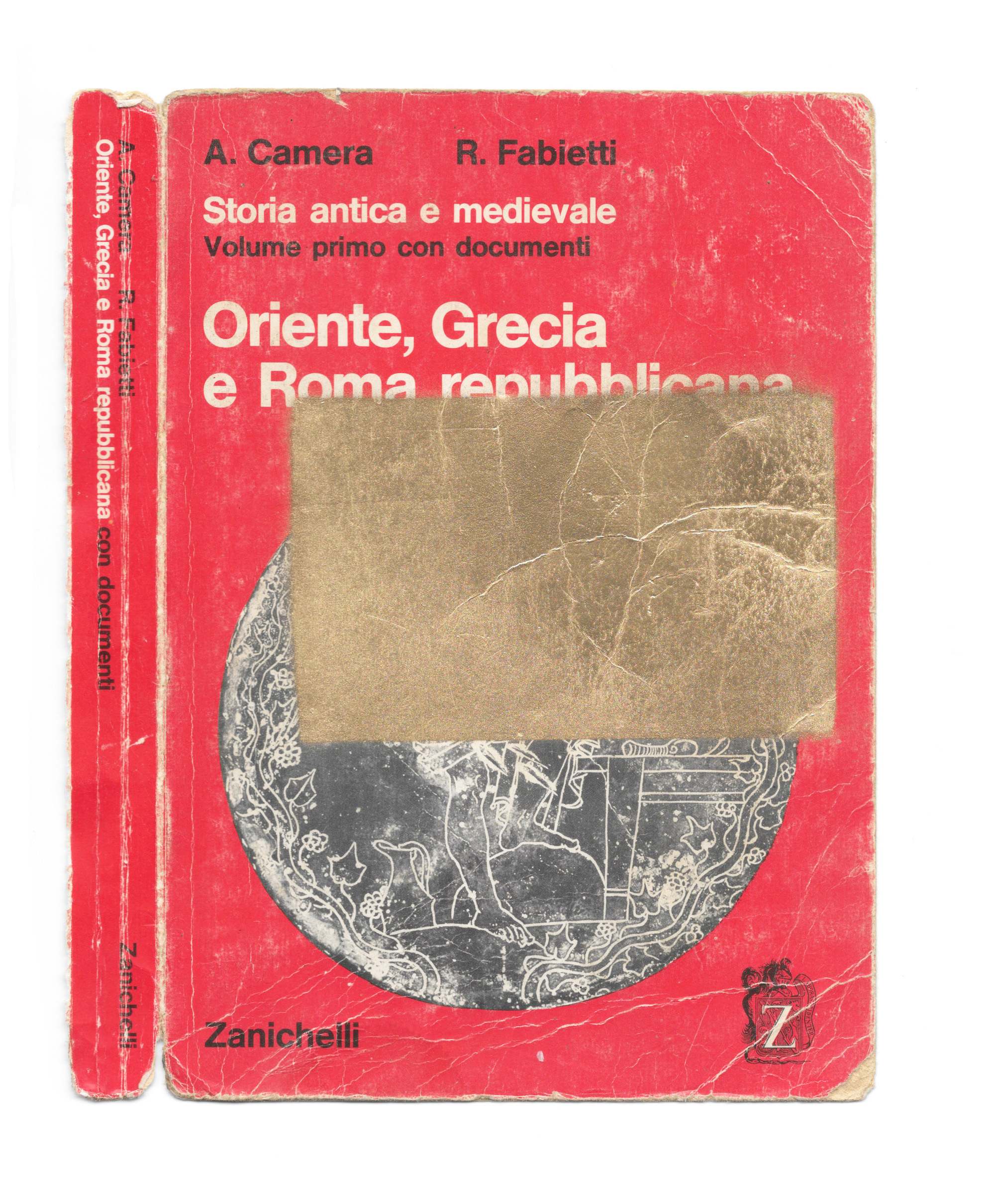Flavio Favelli
Muro Vacante, 2020
Enamel on book cover
© Flavio Favelli
n his work, Flavio Favelli reflects on the memory, the combination of exotic and everyday in his personal life (the middle-class family where he grew up and the oriental culture that he studied at university), and collective, social and political history.
The photograph proposed for Digital for Mauro Staccioli, reproduces Muro Vacante. Favelli paints a golden rectangle and thereby obstructs the view of the cover image of the book Oriente, Grecia e Roma repubblicana by Renato Fabietti and Augusto Camera, part of the series Storia antica e medievale (Zanichelli, 1980). The work evokes Muro (800 x 800 x120 cm), the concrete wall made by Staccioli for the 1978 Venice Biennale which obstructed the way along the avenue leading to the Giardini: to get into the event visitors had to get past it, but it also prevented them from leaving, as well as blocking the view towards the lagoon. In Muro Vacante, Favelli remembers Staccioli’s work with a material (enamel), a colour (gold) and a support (a book on ancient history), which on one hand refer to his recent works and on the other aim to define Staccioli’s Muro as a ‘classic’, in the meaning given to the word by Umberto Eco: a survivor that dictates the future canon.
“Mauro Staccioli’s works lie in close proximity to an area connected to the term ‘classic’. And his Muro from 1978 appears as something affirmative. Despite its literal meaning, it’s read as something to hold onto, a great poetic hope, a generative prophetic vision. The surface of the Muro is reminiscent of spray paint on paper, with an intense and clear density. For some time now, I’ve been marking, tracing, I like to say authenticating, documents and cards with a sort of irregular golden seal.” (Flavio Favelli)
Flavio Favelli (Florence, 1967) lives and works in Savigno (Bologna).
After graduating in Eastern History at the University of Bologna, he took part in the Link Project (1995-2001).
He has displayed his works in solo projects at MAXXI in Rome; Centro per l’Arte Contemporanea Luigi Pecci in Prato; Fondazione Sandretto in Turin; Maison Rouge in Paris and 176 Projectspace in London.
In 2008 he designed and created Sala d’Attesa in the Pantheon in Bologna, inside the Certosa monumental cemetery where non-religious funerals are celebrated.
In 2010 he was artist-in-residence at the American Academy in Rome.
He took part in the Italics xhibition at Palazzo Grassi, Venice (2008) and at the Museum of Contemporary Art (MoCA), Chicago (2009) and at two Venice Biennales: the 50th and the 55th (Italian Pavilion).
In 2015, the Quirinale and Ministry of Defence chose his work Gli Angeli degli Eroi to represent fallen soldiers in the 4 November celebrations.
Website: flaviofavelli.com
in dialogue with Mauro Staccioli, Muro, Biennale di Venezia 1978.
Photo by E. Cattaneo




